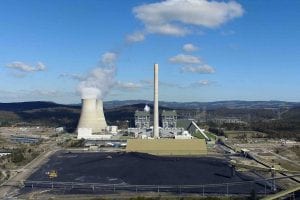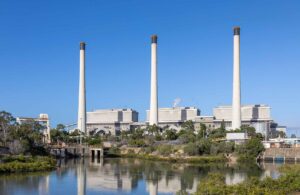Imagine going to the local fruit market to buy a dozen apples to make some crumbles for your dinner guests, only to find the sole vendor has just 10 on display at a price of $1 each.
Fair enough, but you really, really need 12 apples to cater for all the guests. The vendor reaches into a secret compartment and says you can buy two more, but they will cost $5,000 each. Worse, if you want the whole dozen, each apple will then cost $5,000. That will be $60,000 in total. We do have Eftpos.
Most buyers will deliver some choice words and decide on a Plan B, such as a pear compote, or a pavlova. In the electricity market, because it is an essential service, there is little room to move, yet this is exactly what happens on a regular basis, and the regulators say it is all perfectly legal, as long as it doesn’t happen too often.
The latest reports from the Australian Energy Regulator make for some grim reading about the state of the markets, both for the industry and for the consumer.
They look at 11 occasions when the wholesale price of electricity soared above $5,000/MWh in Queensland and NSW – the country’s most coal dependent states – between April 20 and May 15, in the lead up to the crisis that resulted in the market operator suspending the whole market for the first time.
The AER points to three main causes of the April and May price spikes – planned and unplanned outages at coal plants that meant one-third of coal capacity was not available, as well as “technical” problems that reduced output at others.
“Autumn is typically a shoulder period, when coal plants often undergo planned outages for maintance,” the regulator says. “However, more than half of the Queensland outages during the high price events were unplanned and due to technical issues.”
Cheap and reliable coal, I hear the LNP say, even in winter.
To complicate matters, there were planned and unplanned network outages, and subsequent constraints imposed by the market operator, which reduced the ability of the states to trade with each other and source cheaper power.
That left them at the mercy of the price setting generators in their respective bailiwicks. And the generators – the big coal plants on this occasion – didn’t miss. They rarely do.
Take, for instance, the activity highlighted by the AER at the 850MW Milmerran coal generator owned by Intergen, when it moved part of its capacity from the price floor to the price cap, because of a “change in market prices”.
“At 6.04 pm, InterGen rebid 70 MW from the price floor to the cap for the 6.10 pm interval and 80 MW for the 6.15 pm interval. Only 22 and 52 MW of high priced capacity, offered at $13,200/MWh, was needed for the 6.10 and 6.15 pm intervals, respectively.
“At 5.28 pm on 28 April, InterGen made a similar late rebid to the one made at 6.04 pm on 20 April, moving 105 MW from the price floor to the cap for the 5.35 and 5.40 pm dispatch intervals. Without this rebid, the price would have been below $5,000/MWh for these intervals, but the 30-minute price would have remained slightly above $5,000/MWh. Once again, the rebid reason referred to a change in the Queensland price.”
Just to be clear, when the electricity price is set, it is paid to all generators dispatching at the time, even if their operating cost of generation is nil. Intergen did not lift its prices because the cost of coal generation suddenly spiked. It sought a market opportunity, and seized it. The consumer has deep pockets, it can pay.
That’s the way the electricity market works. It takes just one megawatt (MW) of capacity at a higher price to set the market price for another 10,000MWs.
It was a ruse famously exploited by the big generators while they controlled the frequency control market, before the arrival of the first big batteries smashed that particular cartel. It must have been legal because the regulator never did anything about it. But it is still a big game in the electricity market itself.
In NSW, a similar event occurred on May 3, according to the AER report.
“At 5.27 pm on 3 May, Origin Energy rebid 20 MW of capacity from $137 to $12,590/MWh at Eraring unit 3 for all 12 dispatch intervals during the high priced 6 and 6.30 pm 30 minute intervals. For a number of these dispatch intervals, Eraring unit 3 set the price.
“In addition, at 6.06 pm Origin rebid a total of 40 MW of capacity at Eraring units 1 and 2 from $137 to $12,590/MWh for the 6.15, 6.20, 6.25 and 6.30 pm intervals. This contributed to the 6.30 pm high price as less than 40 MW of high priced capacity was dispatched.”
That’s just 20MW and 40MW of rebid capacity from a generator that can produce 2,800MW, and again it wasn’t because the cost of coal generation suddenly spiked, it was a market opportunity that was seized.
It all washes through to the rest of the plant’s output, and indeed all generation operating at the time. And it is all perfectly legal, at least under the rules of the market designed by, and for, the incumbent generators.
Per the AER:
“Rebidding from low to high prices is permitted under the energy rules. However, the ability of a participant to regularly influence the price through rebidding strategies may indicate excessive market power leading to reduced effectiveness of market competition.”
The AER promises to reveal more in a “Wholesale electricity market performance report” that is due sometime soon, and which will hopefully include its definition of “excessive market power”. Don’t hold your breath. And maybe consider that pear compote.
But it might also be time to consider what the UK is doing. Frustrated at having the impact on high fossil fuel prices flow through to all generation, including wind and solar with a marginal or zero cost of generation, authorities there are thinking of splitting the market into two.
One market would be to allow cheap renewables to be exactly that – cheap for the consumer. So a market would be set for bulk generation. A second market would be created for “firming capacity”, so the cost of that can be explicit. How else to convince the consumer that the switch to renewables really will lower the cost of electricity.






